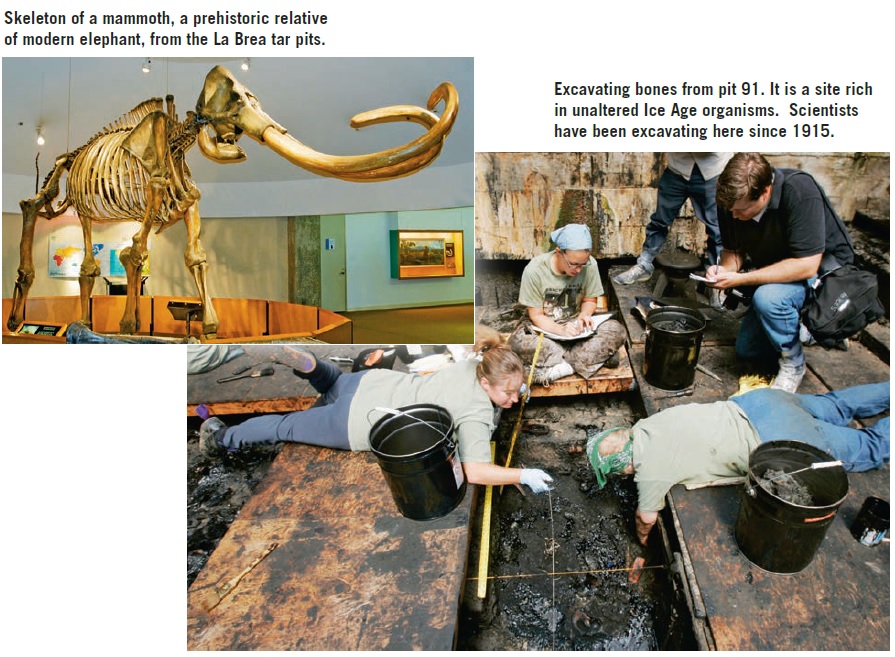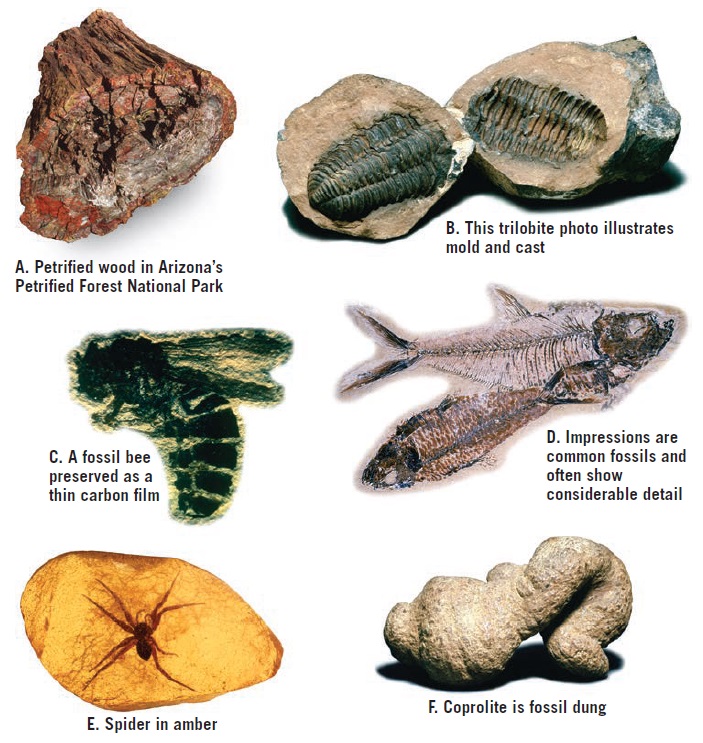Types of Fossils: Exploring the Ancient Remnants of Life

Introduction
Fossils offer a remarkable glimpse into the past, providing valuable insights into the diverse organisms that once roamed the Earth. From bones and teeth to entire preserved animals, fossils come in various forms, each with its own unique preservation process. In this article, we will delve into the different types of fossils, shedding light on their formation and significance in paleontological studies.

(Excavation photo by Reed Saxon/ AP Wide World Photo; skeleton photo by Martin Shields/Alamy)
I. Preserving the Past: Permineralization
One common process of fossilization is permineralization. When mineral-rich groundwater seeps into porous tissues like bone or wood, minerals gradually precipitate out of the solution, filling empty spaces and pores. Petrified wood, for example, undergoes permineralization with silica, transforming it into chert, often displaying vibrant bands of color due to impurities such as iron or carbon.
II. Capturing Impressions: Molds and Casts
Another prevalent type of fossilization is the formation of molds and casts. When an organism’s shell or structure is buried in sediment and subsequently dissolved by underground water, a mold is created. This mold precisely retains the organism’s shape and surface characteristics, but not its internal structure. If these hollow spaces are later filled with minerals, casts are formed, effectively replicating the original organism.
III. The Art of Carbonization and Impressions
Carbonization is a fossilization process that effectively preserves delicate animal forms and leaves. It occurs when fine sediment engulfs the remains of an organism, gradually squeezing out liquid and gaseous components and leaving behind a thin residue of carbon. Organic-rich mud deposits, like black shale in oxygen-poor environments, often contain abundant carbonized remains. In cases where the carbon film is lost from a fossil preserved in fine-grained sediment, an impression may still display intricate details of the organism’s surface.
IV. Amber: A Window into Ancient Ecosystems
Preserving delicate organisms is no easy feat, making their fossilization relatively rare. One exceptional preservation method involves entrapment in amber, the hardened resin of ancient trees. The process occurs when insects, for example, get trapped in drops of sticky resin. Over time, the resin hardens, creating a protective case that shields the remains from decay, pressure, water, and air.
V. Traces of Life: Trace Fossils
Apart from the aforementioned fossils, the fossil record also contains various indirect evidence known as trace fossils. These traces provide glimpses into prehistoric life and include:
Tracks: Animal footprints imprinted in soft sediment that later solidified into sedimentary rock.
Burrows: Tubes created by animals in sediment, wood, or rock. These hollow structures may become filled with minerals and eventually preserved. Some of the oldest-known fossils are believed to be worm burrows.
Coprolites: Fossilized dung and stomach contents that offer insights into the size and diet of ancient organisms.
Gastroliths: Highly polished stomach stones used by certain extinct reptiles to grind their food.
Conclusion

Source; photos B, D, and F by E. J. Tarbuck; photo C by Florissant Fossil Beds National Monument; photo E by Colin Keates/Dorling Kindersley Media Library)
Fossils represent invaluable remnants of ancient life, enabling scientists to reconstruct ecosystems long gone. From the remarkable preservation of entire animals to the intricate details captured in molds, casts, and impressions, each fossil type provides unique information about Earth’s history. Whether through permineralization, carbonization, amber entrapment, or trace fossils, these ancient relics continue to deepen our understanding of the past.
Questions and Answers:
What is permineralization?
Permineralization is a process in which mineral-rich groundwater fills pores and empty spaces in porous tissues like bone or wood, gradually transforming them into fossils.
How are molds and casts formed?
When a shell or structure is buried in sediment and dissolved by underground water, a mold is created. If the hollow spaces left behind are filled with minerals, casts are formed, replicating the original organism.
What is carbonization in fossilization?
Carbonization is a fossilization process that occurs when fine sediment encases the remains of an organism. Over time, pressure expels liquid and gaseous components, leaving a thin residue of carbon.
How are delicate organisms preserved in amber?
Delicate organisms can be preserved in amber when they become trapped in drops of sticky resin. As the resin hardens, it forms a protective case that shields the remains from decay, pressure, water, and air.
What are trace fossils?
Trace fossils are indirect evidence of prehistoric life. They include tracks, burrows, coprolites (fossilized dung), and gastroliths (stomach stones used for food grinding by certain reptiles).
